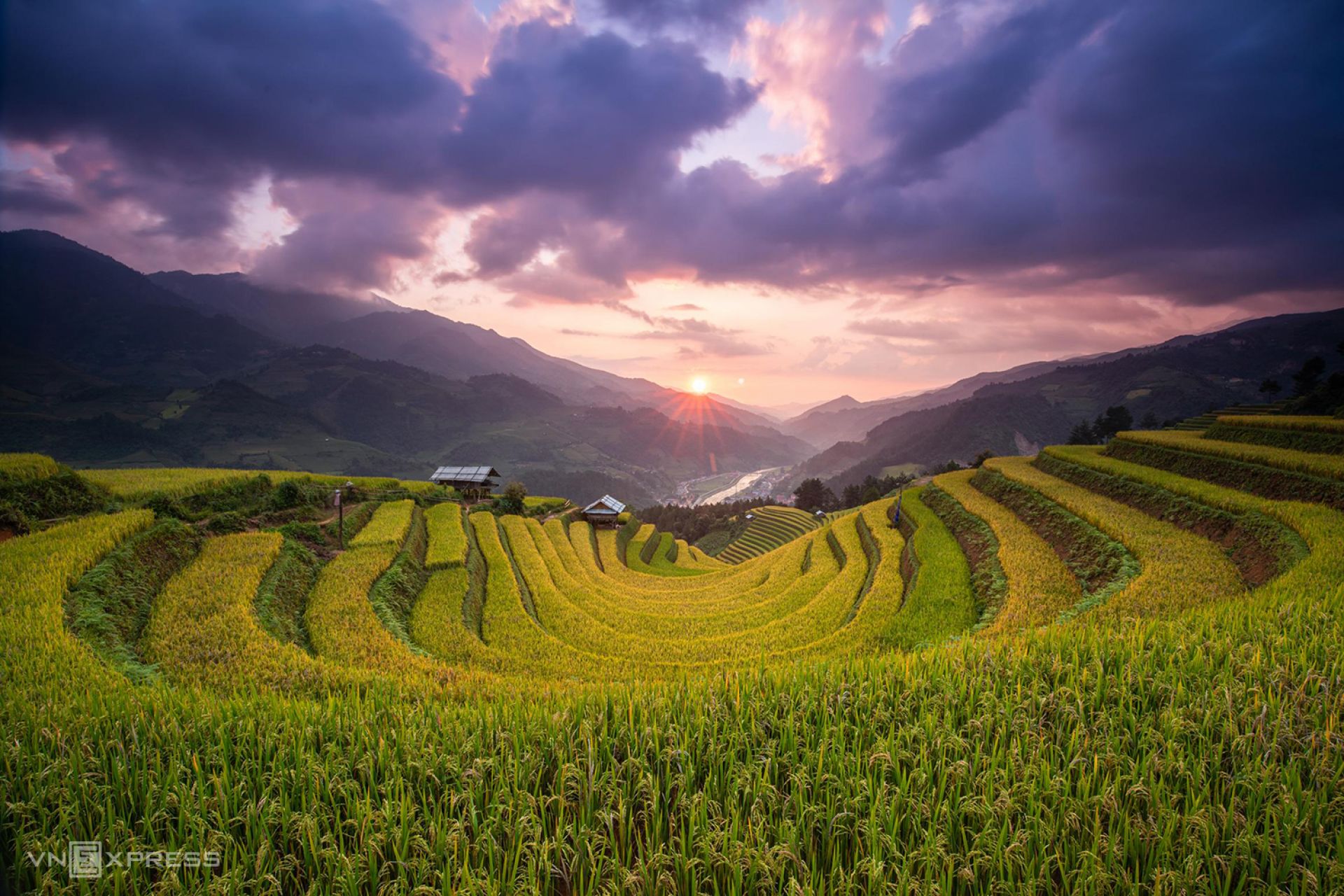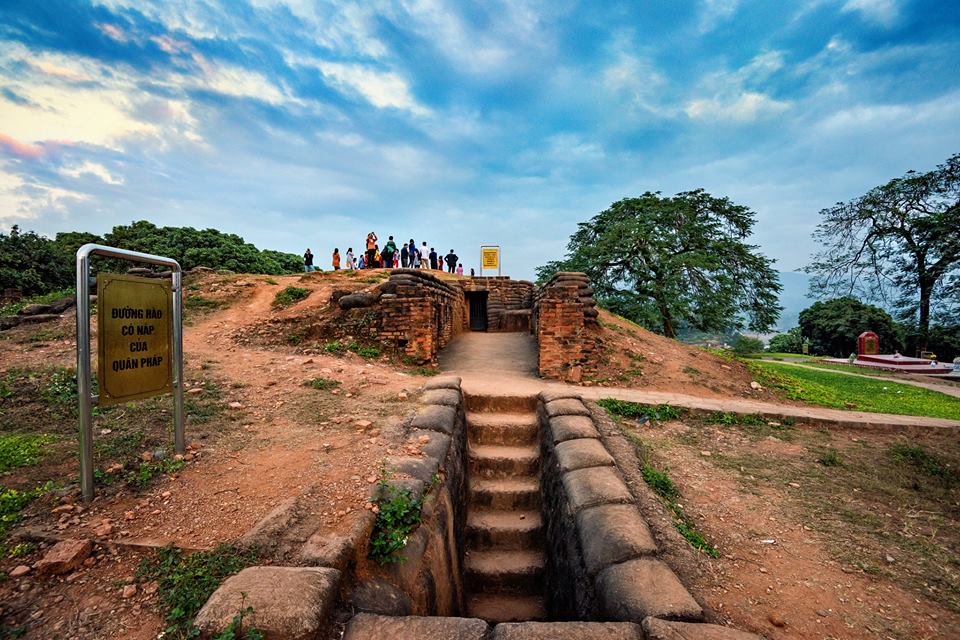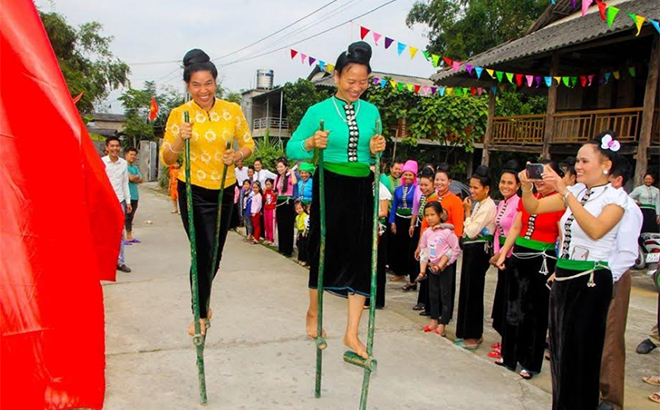Vietnam Northern Mountains
TOUR OVERVIEW
- 7 days
- Max people: 25
- Wifi available
- Jan 01- Dec 31
- Min age:
- Pickup: Airport

Embark on an unforgettable journey through the stunning landscapes of Northern Vietnam. From the picturesque terraced rice fields, the breathtaking mountainside views, to the historic Dien Bien Phu battlefield and the charming town of Sapa. Experience the stunning landscapes, rich history, and ethnic minority cultures in Northern Vietnam!
ITINERARY
Embark on a captivating journey from Hanoi to Muong Lo, recognized as one of the four principal fertile valleys in Northwest Vietnam, alongside Muong Thanh, Muong Tac, and Muong Than. This region is predominantly inhabited by the Thai ethnic group, characterized by its picturesque stilt-house villages and traditional rice cultivation. The itinerary includes a scenic drive along National Road 32, following the Black River (Da River), a vital waterway in the area. A stop will be made in Thanh Son to explore a lush green tea plantation and the stilt-house communities of the Muong ethnic group, a community largely untouched by Chinese influence.
Upon arrival in Nghia Lo, guests will have the opportunity to walk or bike through the charming Thai villages, immersing themselves in the breathtaking rice field valleys and interacting with the welcoming locals.
For a more immersive cultural experience, we offer the option of homestays equipped with essential amenities, including clean mattresses, pillows, mosquito nets, blankets, outdoor restrooms, and hot water showers. Alternatively, hotel accommodations are also available. Please contact us for tailored recommendations.
Begin your day with a delightful breakfast before visiting a local market in Nghia Lo. Following this, transfer to Mu Cang Chai via Tu Le, renowned for its breathtaking rice terraces, often regarded as the most beautiful in the world. In 2007, the terraces of Che Cu Nha, De Su Phinh, and La Pan Tan were designated as national heritage outdoor masterpieces. As you depart Nghia Lo, traverse the hilly terrain inhabited by the Dao ethnic group. Take advantage of stops along the way for photography and to engage with the local community. Upon reaching Tu Le, consider a trek to the valley where the Thai people reside in stilt houses. This experience offers unique opportunities to immerse yourself in authentic local life. In the afternoon, continue your journey to Khau Pha Pass, which provides stunning panoramic views of the rice terrace valleys. Next, the vehicle will transport you to La Pan Tan, a legendary route favored by photographers. Here, you will marvel at the exquisite rice terraces, masterpieces crafted by Hmong farmers over generations. Enjoy the magnificent landscape as you travel from La Pan Tan to Mam Xoi. Conclude your day with check-in at your accommodation
Depart for Dien Bien Phu via Tuan Giao, where you will be treated to stunning landscapes of rice terraces and mountains along the route. From Than Uyen, we will take the serene National Road 279 toward Tuan Giao. Upon reaching Ban Chat Reservoir, a large body of water that stretches for 20 kilometers, pause for a short walk to appreciate the tranquility and breathtaking scenery. Continue your drive to Pa Uon Bridge in Quynh Nhai, crossing the Da River, one of the key rivers in northern Vietnam. Make another stop to capture memorable photographs and engage with the local community. Arrive in Tuan Giao around noon and enjoy lunch at a local restaurant. Afterward, proceed to Dien Bien Phu, traversing the regions inhabited by the Black Thai and White Thai ethnic groups. Strategically located near the borders of Vietnam, Laos, and China, Dien Bien Phu is an 18-kilometer-long and 6-kilometer-wide valley surrounded by mountains rising 1,000 meters high. This valley was the site of the pivotal battle between the Viet Minh and the French expeditionary forces in 1954. Arrive in Dien Bien Phu at approximately 3:30 PM. Begin your exploration with a visit to the War Museum, followed by A1 Hill, which provides a panoramic view of the basin. You will also see De Castries’ command post and the memorial dedicated to the soldiers of the French expeditionary force, built in 1992 as a symbol of reconciliation between Vietnam and France. Conclude your day by checking in to your hotel and taking some time to relax.
Start your day with breakfast before visiting the local market near the historic Muong Thanh Bridge. Following this, depart for Lai Chau, located 210 kilometers from Dien Bien Phu. This region is home to a diverse array of ethnic groups, including the Kho Mu. Originally from Northern Laos, approximately 60,000 Kho Mu people reside on the hill slopes, nestled between the Hmong in the upper regions and the Thai in the lower areas. As you travel, immerse yourself in the vibrant culture of the Hmong people. Crossing through Muong Cha and Muong Lay, you will encounter local women adorned in colorful traditional dresses, complemented by silver and gold jewelry. Take the opportunity to stop at various villages to engage with the locals and gain insight into their authentic lifestyles. Upon arrival in Muong Lay, a resettlement area for hundreds of Thai villagers previously displaced by the Lai Chau – Son La hydroelectric reservoir, you may take a break for tea. Throughout your journey, you will be accompanied by the scenic Nam Na River and the stunning landscapes that surround you. Explore the Thai and Hmong villages along the way before reaching Lai Chau City in the late afternoon. Check in to your hotel and enjoy some time to relax.
Depart for Sapa along the stunning Hoang Lien Son mountain range. As you exit Tam Duong, take a detour to visit Na Tam Village, home to the Laotian and Lu people. This picturesque village offers a tranquil landscape, where local women are traditionally recognized by their blackened teeth and indigo clothing adorned with silver coins. Enjoy a short walk through the village to meet the locals and experience their way of life. Afterward, meet your driver for a transfer to Sapa, crossing the Hoang Lien Son Pass (O Quy Ho Pass). This is the longest and highest pass in Vietnam, stretching 54 kilometers and reaching an elevation of 2,047 meters. Take a moment to relax at the summit and soak in the breathtaking views—an ideal spot for capturing stunning photographs.
In the afternoon, you will arrive in Sapa, a charming town discovered by the French in 1903. With its temperate climate, Sapa has become a popular destination for travelers, renowned for its beautiful rice valleys and the rich cultures of the Black Hmong, Red Dao, and Dzay ethnic groups.
Meet tour guide and enjoy 5km scenic transfer to the west of town. We will start a full day of trekking from Y Linh Ho village. Follow the path downhill, interact with the friendly H’mong ladies and children who live in houses nestled in the valley. Enjoy a bit of relaxation at the cable-bridge with the harmony and beauty of the surrounding nature. If you are sportive and adventurous, follow the uphill trek along the buffalo path with breathtaking views and less tourists. For those looking for an easy trek, embark on a leisurely stroll along the Muong Hoa River. Direct to Head to Lao Chai village and follow a small path winding through the rice fields to reach a charming hamlet. Here, you’ll have the chance to meet a grandmother who’s the last craftsman in the community, using beeswax in the traditional way to decorate the unique indigo clothing of the Hmong people. It’s also a fantastic opportunity to immerse yourself in their daily life and vibrant culture. Continue to Ta Van village, the charming land of the Dzay people, well located on the hill with amazing views of river, rice terraces and Hoang Lien Son Mountain range. As you leisurely walk, meet villagers who will kindly invite you to visit their homes.
Have lunch at local restaurant then transfer back to Bac Ha via Thanh Kim, Thanh Phu, enjoy stunning views of mountain, river and hydropower lakes along the way. Located at an altitude of 1000m, Bac Ha is home to several ethnic groups such as the colorful Hmong, Phu La and Tay. Bac Ha region is well known for its weekly, colorful markets surrounded by wild and beautiful scenery. The markets are not only for the exchange of goods but also for the cultural exchange of the ethnic groups for centuries.
Start to explore Bac Ha, it is possible to visit a colorful, ethnic market ( Bac Ha market is on Sunday. Otherwise we can visit Coc Ly market on Tuesday, Can Cau market on Saturday instead). Enjoy the striking atmosphere with so many goods such as vegetables, poultry, while capturing many minority groups in their best colorful clothing of the week. After visiting the market, take a walk through some idyllic ethnic villages, which is a typical Bac Ha landscape, interspersed with corn fields, cassava hills and clay houses, plum gardens adorned by H’Mong women and their colorful dresses will accompany you throughout the trip.
Come back to town for lunch before transfer to Hanoi.






